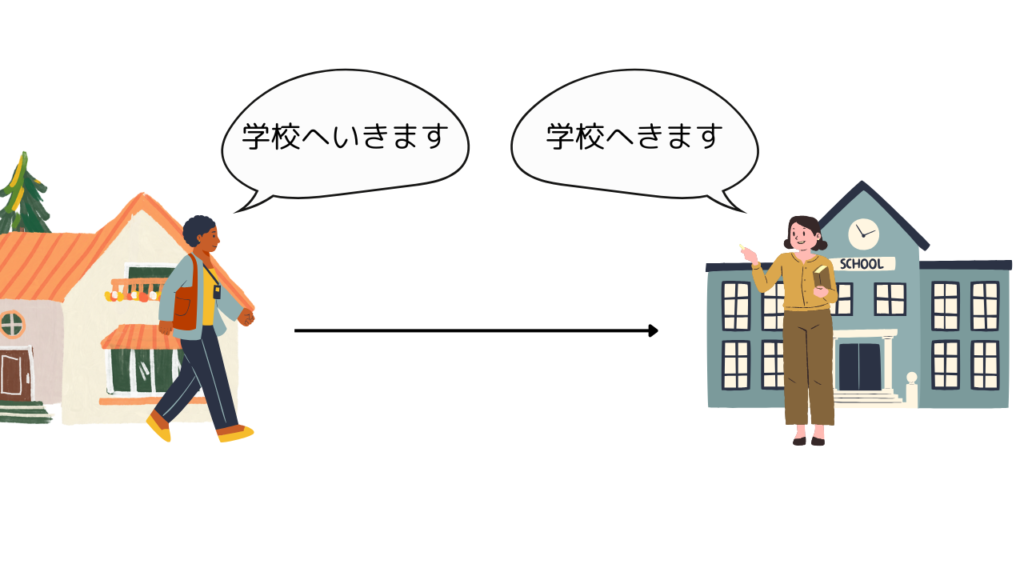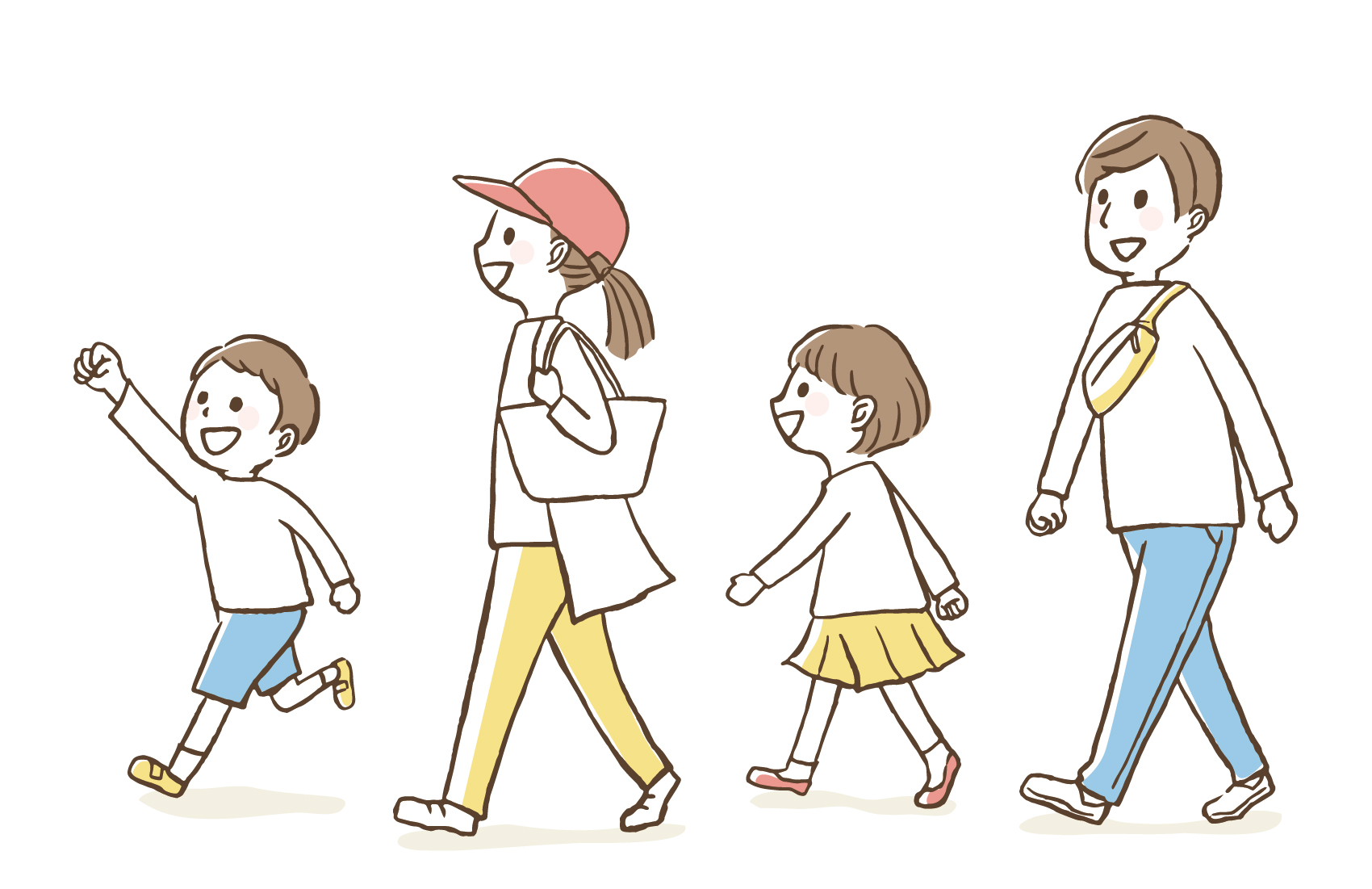場所へ行く来る帰る
Grammar meaning
When moving to a specific location, the particle “へ” is used to indicate that location as the destination.
Depending on your native language, you may have difficulty distinguishing it from “を”.
If you’ve just started learning Japanese, there’s no need to think too hard about it.
It’s sufficient to understand that ‘へ’ is used with “行きます/来ます/帰ります” at this stage.
Also, as a point of caution, you must distinguish between “行きます” and “来ます” depending on the positional relationship between the speaker and the listener.
For example, when a student goes to school, from the student’s perspective, it’s “わたしは学校へ行きます”, but when the teacher speaks about that student, it becomes “学生が学校へ来ます”.

Example sentence
・あした、友だちのいえへ行きます。
Tomorrow, I will go to my friend’s house.
・きのう、山田さんはパーティーへ来ましたか。
Did Mr. Yamada come to the party yesterday?
・Q:いつ国へかえりますか。
Q:When will you return to your country?
A:来年、国へかえります。
A:I will return to my country next year.

Additional notes
Here is a conversation that often leads to mistakes in responses.
Please imagine this as a conversation in a classroom.
Q:あした、どこへ行きますか。
A:学校へ行きます。NG
A:学校へ来ます。OK
This is a mistake that can occur when answering the question “行きますか” by simply replying with “行きます”.
Since the actual conversation is taking place at school, you should answer with “学校へ来ます”. Always consider where you are currently located when speaking.
Conversation example
山田さん:田中さん、どこへ行きますか。
田中さん:ちょっときっさてんへ行きます。
山田さん:あ、きゅうけいですか。
田中さん:いいえ、おきゃくさまとまちあわせです。
山田さん:あぁ、さくら商事さんですか。
さくら商事さんの林さんもきっさてんへ来ますか。
田中さん:いいえ、来ません。
山田さん:そうですか。何時にかえりますか。
田中さん:3時までにじむしょへかえります。
※さくら商事:fictional company name
Yamada: Tanaka-san, where are you going?
Tanaka: I’m going to the coffee shop for a bit.
Yamada: Oh, are you taking a break?
Tanaka: No, I’m meeting a client.
Yamada: Ah, Sakurashoji?
Will Hayashi-san from Sakurashoji also be coming to the coffee shop?
Tanaka: No, he won’t be coming.
Yamada: I see. When will you be returning?
Tanaka: I’ll be back at the office by 3 o’clock.

For Japanese Teachers
I think it’s especially important to understand the relationship between “行く” and “来る” in this grammar.
The key is how to clearly present the movement to a specific place to students within the classroom.
In my experience, I’ve had a student stand up and actually walk towards the teacher to explain who should say “行く” and who should say “来る”, or I’ve used paper dolls to demonstrate the movement.
Also, students who live in dormitories away from their parents sometimes get confused about whether to consider their parents’ home or the dormitory as their own home.
The conclusion is that both are okay to consider as their own home, but if you notice something strange when they are having a conversation using “家へ帰る”, please try to remember this.




